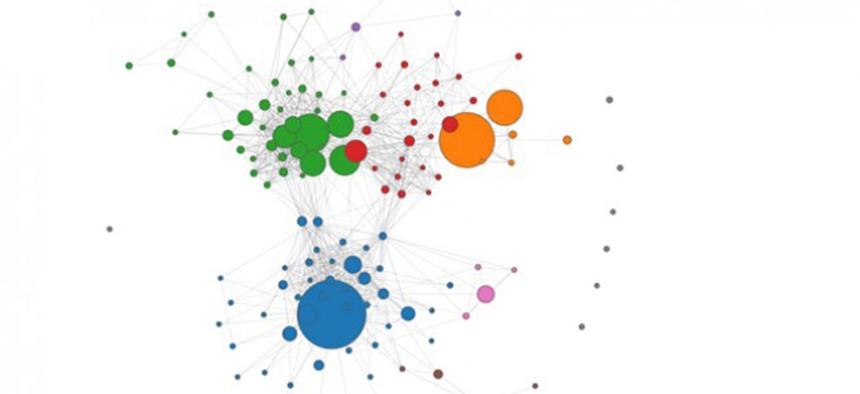Everything Gmail Knows About You and Your Friends

MIT/Brian Fung
MIT project analyzes metadata to show the connections and information Google sees.
When Google hands over e-mail records to the government , it includes basic envelope information, or metadata, that reveals the names and e-mail addresses of senders and recipients in your account. The feds can then mine that information for patterns that might be useful in a law-enforcement investigation.
What kind of relationships do they see in an average account? Thanks to the researchers at the Massachusetts Institute of Technology Media Lab , now you can find out. They've developed a tool called Immersion that taps into your Gmail and displays the results as an interactive graphic. (That's mine, above).
The chart depicts all of your contacts as nodes, and the gray lines between those nodes represent connections between people by e-mail. The larger the circle, the more prominent that person is in your digital life.
A word of warning for the privacy conscious: To use the service, you need to give MIT permission to analyze your e-mail metadata. Once you've done so, it'll take a few minutes to compile everything. When you're done, you're given the option to delete your metadata from MIT's servers.
What you see in my chart are five and a half years' worth of e-mails. The yellow circles indicate family and close family friends. All of my college friends are in red, and my D.C. friends are in green. Blue nodes denote my colleagues at The Atlantic; pink, my coworkers at National Journal; and gray, people who generally don't share connections with the other major networks in my life.
In all, MIT counted 606 "collaborators" in my inbox, totaling some 83,000 e-mails. But you can also break down that data by year, month, or even the past week. Pretty amazing stuff—and a good reminder not only how much information Google knows about you, but what that information can uncover about other people . If you can learn this much just from looking at one account, imagine what crunching hundreds or thousands of interconnected accounts must be like.

Source: MIT
NEXT STORY: Should Congress Telework?





